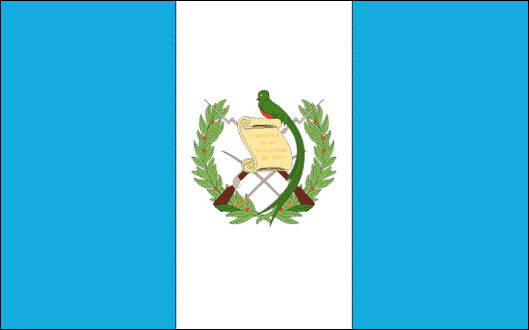Login form
Customs of Guatemala
 Marriage and Family
Marriage and Family
Among the Ladinos, social status is important in choosing a partner. Women often marry by age 20 (earlier in rural areas), and men usually marry by age 24. Common-law marriages are accepted, partly because a formal wedding is unaffordable for some. The groom is responsible for the expenses of the wedding, new clothes for the bride, and any celebrations.
The extended family is the basis of Guatemalan society and is a powerful influence on individual behavior. Traditionally, the father is the head of the family, but the mother controls the household and is considered the heart of the family. In rural areas, extended families often share the same home or live next to each other in a family compound, which often shelters parents, their married sons and their families, any unmarried children, and grandparents. In urban areas families more often live in a nuclear unit, although this may include grandparents. Unmarried adults usually live with their parents, unless they have to live elsewhere for work. Adult children are responsible for the care of their elderly parents.
Ladino women often work outside the home. Mayan women also work, but less often in professional positions. They might sell produce at markets, embroider or weave products for sale, or work in community groups. Within the home, Mayan women are responsible for the food, household, religious duties, clothing, and the children and their education. Men do the field work and other physically demanding labor.
Eating
Maize tortillas are eaten with every meal. Other foods common throughout
The main meal is eaten in the middle of the day and is an important social occasion for the entire family on weekends. A lighter meal is eaten in the evening, usually after 7 pm. Many people have coffee and sweet bread around 4 pm, and men working in the fields might have a snack at midmorning. Children in school are served hot cereal at 10 am.
Most meals are eaten with utensils, but it is common to use tortillas as a scoop, and some foods are eaten with the hands. It is considered good manners to keep hands above the table and not in the lap.
Socializing
When meeting someone for the first time, people usually greet with a hearty handshake and say ¡Mucho gusto! (“Pleased to meet you!”). Among general acquaintances, the most common greetings are ¡Buenos días! (“Good day!”), ¡Buenas tardes! (“Good afternoon!”), and ¡Buenas noches! (“Good evening!”). Among friends, a casual ¡Buenas! or ¡Hola! (“Hi!”) might be used. After an initial greeting, one might ask ¿Cómo está? (“How are you?”). Among friends, men usually shake hands and sometimes embrace, and women kiss each other on the cheek.
Titles such as Señor, Señora, and Señorita are used to show respect, and special respect for an older person is indicated by the use of Don or Doña with the first name. Common phrases for parting include Que le vaya bien (“May you go well”), Nos vemos (“See you later”), and Más tarde (“Later”). The Maya have their own customs and phrases for greetings.
Guatemalans often socialize outside the home, but visiting friends and relatives in their homes is important because it reflects the value one has for a relationship. People who live close, especially in rural areas, often drop by unannounced (or send a child over to say the adults are coming later); nearly any time of day is acceptable. Visits are usually prearranged only for more formal occasions, for longer stays, or if people do not live nearby.
Recreation
Recreational high points for most Guatemalans are the various holidays and festivals throughout the year, when the marimba, a wooden drum played with sticks padded with rubber, can be heard. In general, people tend to spend a lot of their leisure time socializing. Cofradías (religious fraternities dedicated to a particular saint) offer a variety of recreational and leisure activities to members, and in the cities people enjoy watching television. The most popular sports are soccer, basketball, and volleyball.
Holidays and Celebrations
Christmas celebrations in
There are nine days of
Firecrackers accompany most celebrations, especially New Year’s Day (1 January). At Easter, during Holy Week, large processions fill the streets; figures representing Christ are carried on special platforms by men wearing purple robes (or black robes on Good Friday). On the Saturday before Easter, effigies of Judas Iscariot (who is said to have betrayed Jesus Christ) are burned.
National holidays include Labor Day (1 May), Army Day (30 June), Independence Day (15 September), Día de la Raza (Day of the Race, or Columbus Day, 12 October), Revolution Day (20 October), and All Saints’ Day (1 November).
Each town has an annual feria (fair) to honor the local patron saint. This is the largest local celebration, so it is often the most important holiday, especially in rural areas.
Source: Encarta Interactive World Atlas

